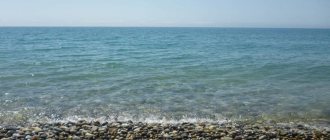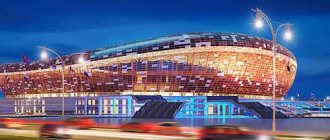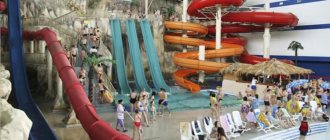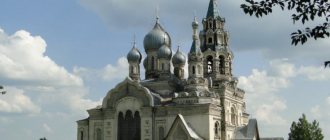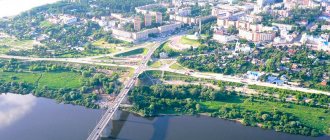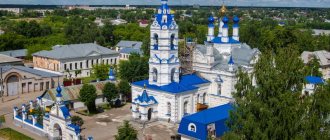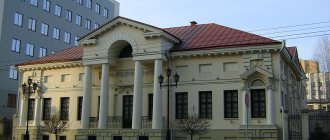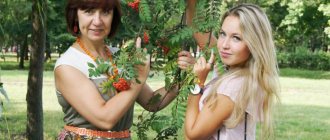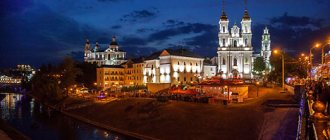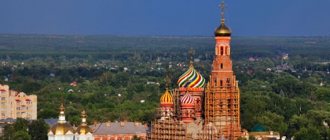Climate of the Belgorod region
Winter period
The climatic character of the Belgorod region is moderate continental. In winter there are snowfalls and thaws, with the first snow in October or November. But the winter temperature does not set right away; the weather is changeable for about two weeks: the snow either falls in a thick layer, or immediately melts. Permanent snow covers the ground only in December and lasts a little more than three months. The maximum height of snow cover in open areas is 21 centimeters; for the southern regions of the region it is slightly lower. But there are periods when the snow disappears completely in the middle of winter due to a thaw.
The coldest time of the year is January. The average minimum temperature is -8.5°C. There are also very cold winters, when temperatures can reach -37°C.
Summer period
Summer in the region is quite long and hot, with little precipitation. The average summer temperature is +15°C. About 25 days per season precipitation falls in the form of rain, for this reason the territory of the Belgorod region is considered dry. The maximum temperature in summer can reach +39°C.
The first frosts can occur as early as August, when there is a sharp drop in summer temperatures. Autumn is quite fleeting, just like spring. Its first half falls on a period of warming, the so-called “Indian summer”. Since October there has been a cooling and nature is preparing for winter.
Report to the project “Diversity of the nature of the native land. Belgorod region"
Our region is located in the center of the East European Plain and has no access to the seas. The territory of the Belgorod Territory is relatively small in area, it is only 67 among other regions of Russia. But the nature of our region is amazing and diverse.
The climate of the region is temperate continental, winters are mild, the soils are very fertile - black soil. The region is located within the natural zones of deciduous forests and forest-steppe. The relief is flat, with numerous hills.
In the Belgorod region there are many places unique in their beauty, which are awarded the title of Natural Monument. This is the Monastery Cave, picturesque springs in different places in the region, relict forests of chalk and Crimean pine.
There are no high mountains in the Belgorod region. Its highest point lies at an altitude of 277 meters above sea level. But there are many rivers in our region, the largest of which are Oskol and Seversky Donets.
Vegetable world
The main plant of our forests is oak; there are quite a lot of oak forests in the region. Along with oaks, ash, linden, maple grow, and rowan and bird cherry trees are found. But there are also forests in the region consisting of birch and aspen.
A characteristic feature of the forest-steppe is the presence of thickets of shrubs, consisting of thorns, rose hips, and wolfberry.
Meadow and steppe vegetation is abundantly represented in the region. These are various meadow flowers and herbs, including cornflower, blueberry, sow thistle, iris, hyacinth, tulip, various umbrella and grain plants.
Animal world
The fauna of the region is also very diverse. We have especially many representatives of the order of rodents - voles, mice, marmots, gophers, and mole rats. Hares, wolves, ferrets and foxes are found both in the forest-steppe zone and in forests. Elks, wild boars, and roe deer are also found in the forests; beavers can easily be found along reservoirs.
The birds of our region are represented primarily by birds of the order Passeriformes, Anseriformes and Raptors. These are crows, tits, nightingales, bustards, geese, swans, ducks, hawks, and eagles.
There are a lot of fish in the rivers of the region. The most common species are bream, roach, carp, and crucian carp; less often you can see catfish, dace, and river lamprey.
Animals and plants of the Red Book
Despite the great diversity of flora and fauna in the Belgorod region, nature needs constant protection. The Red Book has been created in the region, which includes 269 species of animals and 213 species of plants and fungi that require constant protection.
Of the mammals in the Red Book, the muskrat, steppe polecat, European mink, and bandage are represented. Birds include the whiskered tit, millet, redstart, roller, nightjar, scops owl, eagle owl and others.
Among the plants of the Beautiful Book we will mention Russian hazel grouse, Bieberstein tulip, curly lily, two-leaved scilla, and slender swordwort.
Nature conservation in the region
The main environmental threat in our region comes from agricultural enterprises. Huge areas are used for arable land and pastures, and the area of true steppes and meadows is constantly shrinking. The region is actively engaged in environmental protection activities; the Department of Environmental Reproduction has been created under the regional government.
To preserve natural ecosystems, the Belogorye Nature Reserve, two natural parks - Khotmyzhsky and Rovensky, as well as more than a dozen different reserves were created.
Flora of the Belgorod region
The Belgorod region is covered with forests by almost 10%, so its territory is forest-steppe. More than 800 hectares of forests are characterized as a specially protected area. Many groups of unique plants and animals of the region are listed in the Red Book.
“Yamskaya steppe” is a very valuable segment of mixed-grass meadow steppe, which is part of the Alekhine nature reserve, located in the Starooskolsky district. The “Yamskaya steppe” has been protected since the time of Peter 1.
The forests of the region are mainly broad-leaved species. Also, it is rare to find oak forests in their pure form. The forest area of the region is multi-tiered and is represented by the following species: rowan, bird cherry, maple, linden, wild apple and pear trees, ash.
In places of cut down or burnt forests, peat bogs, and on the bottoms of ravines, small-leaved forests form.
Small islands of sandy and chalk forests represent the eastern and southern regions of the Belgorod region.
In the territory of lowland swamps there are cattails, marsh marigolds, reeds and cattails. Sphagnum, wild rosemary, cuckoo flax and cranberries can be seen in areas of high humidity in the west of the region. The wild flora is rich in medicinal plants, among them: sage, field geranium, St. John's wort, chamomile, wild rose hips, and thorns.
List of natural reserves and national parks of the Belgorod region
Belogorye Nature Reserve
“Belogorye” is one of the most extensive and ancient nature reserves in Russia. Its environmental history began many centuries ago, and it first received the status of a reserve in 1924. The huge Belogorye reserve consists of a group of smaller reserves - clusters, the lands of which were gradually annexed to the environmental protection zone. It includes the following protected areas:
- The Forest on Vorskla Nature Reserve is the oldest, and it is from here that the history of Belogorye began. It is often called the “legendary oak forest”, because about 90% of its land is occupied by centuries-old oak trees, some of the trees are up to 300 years old! The reserve is located near the village. Borisovka on the right bank of the river. Vorskla.
- The Yamskaya Steppe Nature Reserve is the largest steppe reserve not only in the Belgorod region, but throughout Russia. Transferred to Belogorye in 1999, it is famous for its fertile black soil and incredible diversity of flora - per 1 sq. m. up to 65 species of plants can coexist here! The reserve is located 12 km from the city of Gubkin.
- The Bald Mountains Nature Reserve , also located near the city of Gubkin in the Belgorod region, is famous for its unique landscapes that were formed as a result of erosion by the waters of the last glaciation and continue to form to this day. The rich flora and fauna of the reserve are also valuable.
Extraordinary landscapes of the Bald Mountains
- The Ostrasyevy Yary Nature Reserve is another steppe section of Belogorye, but of a much smaller area, located 8 km from the village of Borisovka. Many species of unique plants grow on its lands, 35 of which are atypical for the forest-steppe zone.
- The Stenki-Izgorya Nature Reserve is located 9 km from the city of Novy Oskol. Its territory is occupied by small oak forests and relict chalk forest, as well as grass swamps and mixed forests. The nature and fauna are very diverse; many of the inhabitants of these places are listed in the Red Book of the Russian Federation.
- Natural Park "Rovensky" , located in the vicinity of the village of Rovenki, occupies a vast territory and combines protected forests, swamps, meadows and natural springs, as well as a valuable cultural and historical monument - the Church of St. Tikhon of Zadonsk.
The picturesque landscape of the Yamskaya steppe
Contacts of "Belogorye": Address center. estates - town. Borisovka, per. Monastyrsky, 3. Tel.: 8(47246)50616, 50315.
Bekayurovsky pine forest
The reserve is famous as the best preserved habitat of chalk pine, but there are also many other rare species. In total, there are about 368 species of flowering plants on the territory. This conservation area is located near the village. Malo-Mikhailovka, Shchebekinsky district, Belgorod region.
The beauty of the ancient forest of Bekayurovsky Bor
Nezhegolsky Nature Park
It also includes the Botanical Garden and the Winter Garden of Belgorod, where a rich collection of various plants is collected. The natural park itself is created by a picturesque landscape ensemble consisting of forests, meadows and gullies.
Address: Belgorod, st. Pobeda, 85. Tel.: 8(4722)301101.
Botanical Garden in Belgorod - a branch of the Nezhegolsky Natural Park
Khotmyzhsky Natural Park
This natural area is famous for its unique “island” Central Russian oak forests, which are up to 100 years old, located in the middle of the steppe areas.
Address: Rakityansky district, town. Rakitnoye, Proletarsky lane, 2.
Mammals of the Belgorod region
Even in the recent past, the Belgorod region could boast of such inhabitants as lynx, bear and other large forest animals. But as a result of the extermination and improvement of lands for farming, a change in fauna occurred. In the post-revolutionary period, the natural world of the region came under special protection. Hunting for useful animals was limited and categorically prohibited for particularly rare ones.
Among mammals, ungulates have become widespread. Moose are especially proud. Previously, in the 50s, these animals had just begun to develop the territory of the Belgorod region, and therefore were under special protection, which contributed to their reproduction. Now moose are not such a rarity in these places.
All small oak forests are inhabited by wild boars. In especially large forests (the southern part), there were many wild goats, which were practically exterminated during the war years. Now they are protected in the reserve.
Palace complex of the Yusupovs in Rakitny
The Yusupov palace complex in the village of Rakitnoye is one of the most beautiful historical sights of the Belgorod region. These beautiful places attracted members of the princely family so much that for almost 200 years they owned Rakitnaya Sloboda, building a two-story palace in 1840 on the initiative of Boris Nikolaevich Yusupov.
The palace took almost 6 years to be built by the prince's serfs, and the project was developed by the capital's best architects, including the Italian Giacomo Florenti. The architecture of the palace harmoniously combines elements of classical, baroque and Russian architecture. A cascade of beautiful ponds was created on the palace grounds, and a park was laid out around it.
This beautiful place was the autumn home for the Yusupovs, who lived according to a rigid schedule of changing residences. After the revolution, the estate was nationalized and a auxiliary boarding school for children from the Belgorod region was placed there. Since 1994, a museum of the Yusupov princes has been opened in part of the former palace.
Predators of the Belgorod region
Predatory mammals have also chosen the Belgorod land. Of these, the most common species are the fox, wolf and raccoon dog. The young forests are home to the red fox, which is an important commercial species.
Rodents are a very common species. Some species are beneficial to humans, others are harmful. The deciduous forests are home to the squirrel, which has become a rare species in the region at the moment. The open areas were occupied by the brown hare. Particularly common are gophers, with whom there is a constant struggle for grain fields.
Fishes of the Belgorod region
Among the fish inhabiting the waters, the carp family is widespread. In large rivers you can often find carp. Belgorod residents are engaged in fish farming of Kursk carp (a hybrid of carp and common carp), and golden crucian carp. Bream, which lives in quiet rivers, is a valuable species of fishery. Pike perch “live” in the Oskol River.
As a result of pollution and shallowing of water bodies, fish resources have decreased significantly. Now we are strengthening the protection of existing species and breeding new ones.
Soil of the Belgorod region
The formation of soil is greatly influenced by steppe and forest vegetation. Thanks to these zones, black soil and gray forest soils arose. The region is dominated by black soil.
Chernozem is the most fertile soil (occupies 77% of the region's area), which creates favorable conditions for growing cultivated plants. The soil-forming materials for chernozems are clay and loess-like loams. They contribute to the formation of fertile black soil.
The climatic conditions of the Belgorod region lead to the emergence and formation of fertile black soil. Dry season, relative moisture and freezing of the soil contribute to the formation of humus (humus).
The region is located on the territory of an elevated plain. That is why deep groundwater does not affect soil formation.
On the territory of black earth Belgorod, nature has created the most favorable conditions for growing many crops (wheat, oats, barley, buckwheat, corn, etc.).
Natural monuments of the Belgorod region
The territory of the Belgorod region is very beautiful and well-groomed, and has a huge variety of natural monuments. Belgorod is filled with a huge number of ponds, swamps, springs, and mineral waters. All these natural attractions are spread throughout the region, and some of them are a must-see.
Belogorye Nature Reserve
The Belogorye Nature Reserve is one of the most visited places by tourists. Its total area is 2000 hectares. This reserve, founded in 1999, contains five unique areas. According to reviews from tourists, you should definitely visit these places.
Krapivenskoe settlement
The Krapivenskoye settlement is an archaeological monument, located on the hill of the right bank of the Koren River. In the 5th century BC. Scythian tribes lived here, which was proven by excavations carried out in those places. Afterwards, a tribe of northerners settled on their territory, one of the tribes that formed Kievan Rus. If you visit the local history museum, you can see many exhibits of ancient Rus'.
Museum dedicated to the Battle of Kursk
Another attraction of the Belogorye Nature Reserve is the Battle of Kursk Museum. This diorama museum was opened in 1985 as a sign of victory in the Second World War. Most of the exhibits on display are elements of the Battle of Kursk.
Sundial
The most recognizable symbol of the Belgorod city center is the sundial installed in 2008. They were created based on the prototype of medieval illustrations. The diameter of the watch is 11 m with an error of only a few minutes (which is surprising for this type of device). Another feature of this watch is that it works at night! With the onset of darkness, the LED display on the circle lights up - the starry sky.
Warfare
Military Affairs is a museum of medieval military affairs. It's a must visit. There you can not only see, but also hold medieval weapons in your hands.
Gallery in the Belogorye nature reserve
An amazing place in the Belgorod region, or rather the Belogorye Nature Reserve, photo art gallery named after. V.A. Sobrovin (famous photographer). The gallery was opened in 2008. This interesting place has collected many original works by contemporary photographers. The gallery organizes not only exhibitions of photographic works, but also engages in training photographers, publishing and research activities.
Prokhorovskoe field
Perhaps the most famous area in the region. It is famous for tank battles of the Second World War. In 1995, as a sign of respect for the tragic events, a memorial complex was erected, representing various objects that perpetuate the feat of Soviet soldiers during the Second World War. The most important monument of the Prokhorovsky field is the Belfry. It was erected on May 3, 1995, to a height of 252 m. Not far from the Belfry there is an exhibition of armored vehicles from the Second World War.
The museum called “The Third Military Field of Russia” was founded in 2010. This special gallery is located on an area of more than 2000 m². This exhibition collected all the photographs, documents, weapons and many memorabilia from the Second World War. Modern technologies, installations and reconstructions make it possible to recreate a complete picture of those times.
Monastery Forest
Previously, this forest was called Tract Meadow. According to legend, it was here that the icon of the Mother of God was discovered. This spiritual place allows you to be alone with nature, truly calm down, and escape from the everyday hustle and bustle. Tourists enjoy visiting this forest.
Air Traffic Control Museum
The museum was opened relatively recently, in 2010. The museum houses within its walls items of interest related to investigations of sensational crimes. Guests can study them and immerse themselves in the work of the ATC squad.
Prokhorovskoe field
One of the most famous military museum-reserves of military history is located in the Belgorod region - this is the Prokhorovsky field, the site of the tank battle of the same name with the German invaders in 1943 during the Battle of Kursk.
The historical complex, formed in 1995, included: the three-domed snow-white church of the holy apostles Peter and Paul, on the marble walls of which 7,000 names of soldiers who fell on the Prokhorovsky field are inscribed; a beautiful 50-meter belfry, decorated with a 7-meter sculpture of the Intercession of the Mother of God; Bell of unity of three fraternal peoples (2000) - Russia, Ukraine and Belarus; numerous sculptures, mass graves, a museum of military tank equipment and many other beautiful and interesting places.
